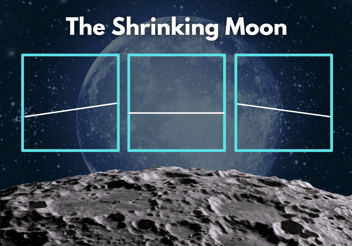Underground Mystery - Kesler Science Weekly Phenomenon and Graph
It sounds like a scene from a science fiction movie: a team of workers are exploring a mine deep underground. They discover something so staggering that they have to call in the experts. Even the professional scientists have a hard time explaining what's down there!
This is exactly what happened in the year 2000 at an iron and lead mine in Naica, Mexico. The Naica Mountains formed when a pocket of magma cooled down, trapping water that was rich in minerals. This created the perfect conditions that led to the formation of some very bizarre objects.
So what is it that baffled the science community? When a mining operation drained the water from the cave, they found giant, beautiful crystals of selenite, a form of gypsum, with some that were nearly 40 meters long. Check out this photo, and be sure to see the person in the bottom corner!

These huge crystals have grown far beyond the size of most minerals we encounter. Here's a sampling of the largest crystals found of some well-known minerals:

How did these amazing crystals form? First off, the mineral-rich water that was trapped in the underground cavern played a huge role. The water was super-saturated with a salt called calcium sulfate (CaSO4). Fun fact: that's the same material used to make the drywall, or "gypsum board," in your house. 🏠
Secondly, the temperature of the cave was perfect for slowly forming large, stable crystals. As the magma around the cave cooled, the temperature dropped slowly. When the saturated water reached a temperature range between 54oC - 58oC, the calcium sulfate started to fall out of the solution and collect as crystals.
The cavern was able to maintain that ideal temperature for crystal growth for a really long time. Scientists replicated the cave conditions in their lab to estimate how long the crystals have been growing. You can imagine their surprise when they calculated that the beams of selenite would add just the thinnest sliver of a millimeter - less than a sheet of paper - over two centuries.
Nearby caverns filled with the same kind of mineral water cooled off much faster. They have crystals too, but they look more like little swords than towering monuments.

The cave was still really warm when the researchers were called in: the water and environment inside of the cavern was 50o Celsius (or about 120o Fahrenheit)! The cave was at 90% humidity, too, so imagine Death Valley temperatures paired with Everglades swampy-ness. The researchers could barely spend 15 minutes at a time in the cave!
Now, here's an out-of-this-world connection: gypsum doesn't only accumulate on planet Earth. Rovers on Mars have taken magnified photos of the same crystals on a much smaller scale, and orbital scans have detected gypsum, too. This has some pretty big implications.
First, it hints that the red planet once had bodies of water where the CaSO4 was dissolved. Second, the gypsum crystals would have formed as those water bodies slowly evaporated. 💧That suggests a lot of interesting ideas about what Mars might have looked like in the past.
Gypsum is just one of the minerals observed on the Mars surface, but here's an interesting fact for you: scientists think Mars has only a fraction of the minerals found on Earth.

Why? Mars doesn't have plate tectonics or continental drift, so the crust hasn't experienced as much pressure and recycling as Earth's crust has.
Here are some questions I might pitch my students if I were to present this phenomenon and graphic:
💡 In the Naica Mountains, caverns that are closer to the surface tend to have much smaller crystals than those that are deeper down. Why might this be?
💡 Scientists are looking at the surface of Mars for fragments of crystals similar to those found in Mexico. What could crystals tell scientists about ancient conditions on Mars?
💡 Why would the lack of plate tectonics on Mars affect the number of minerals there?
Hope this inspires you and your students to "dig" into some fun facts this week!
- Chris
Cave of Crystals - Alexander Van Driessche, CC BY 3.0 <https://creativecommons.org/licenses/by/3.0>, via Wikimedia Commons
Selenium "swords" - Wikipedia Loves Art participant "Assignment_Houston_One", CC BY-SA 2.5 <https://creativecommons.org/licenses/by-sa/2.5>, via Wikimedia Commons


.png?width=352&name=Chicken%20graph%20for%20phenomenon%20blog(1).png)
